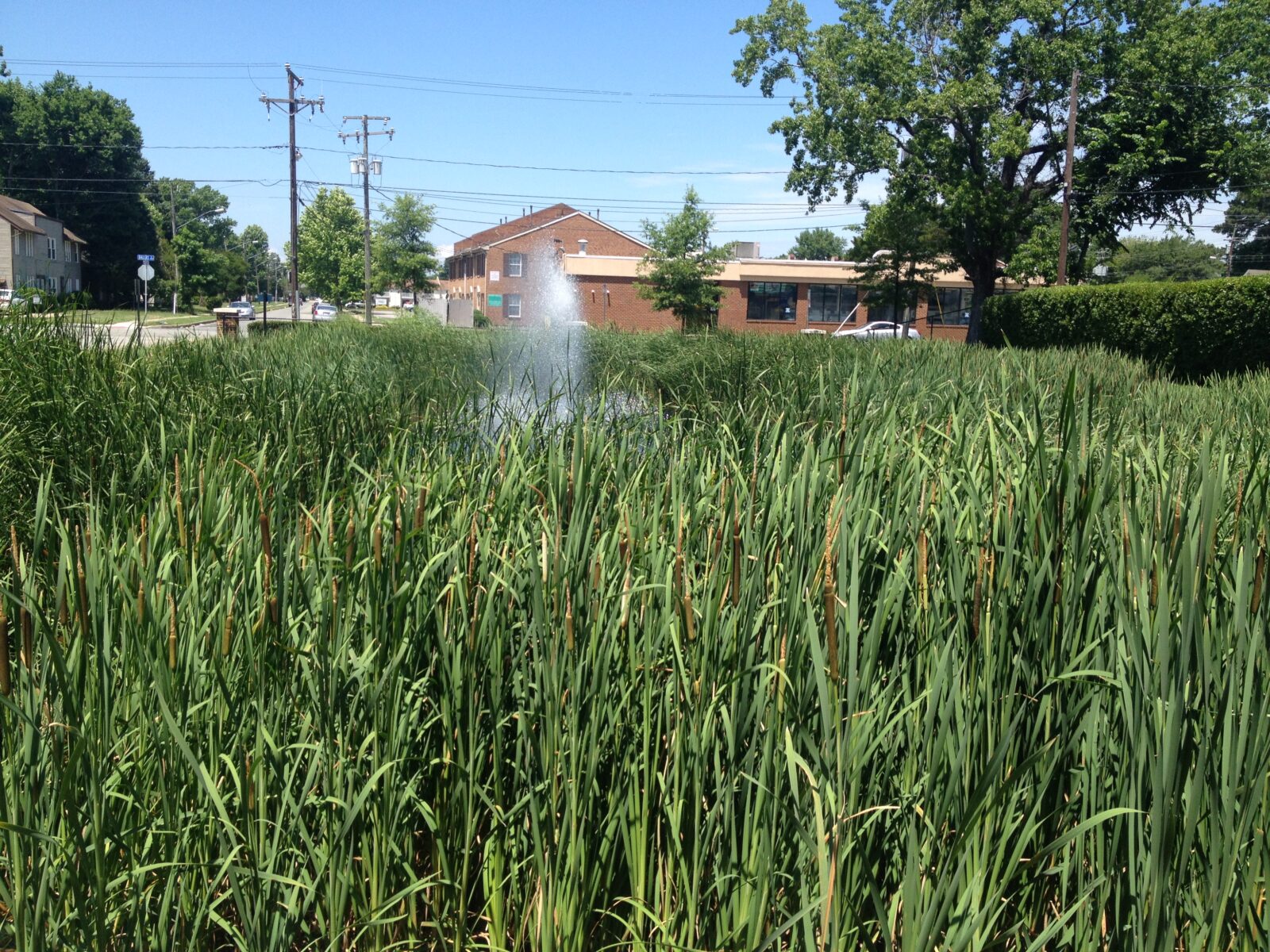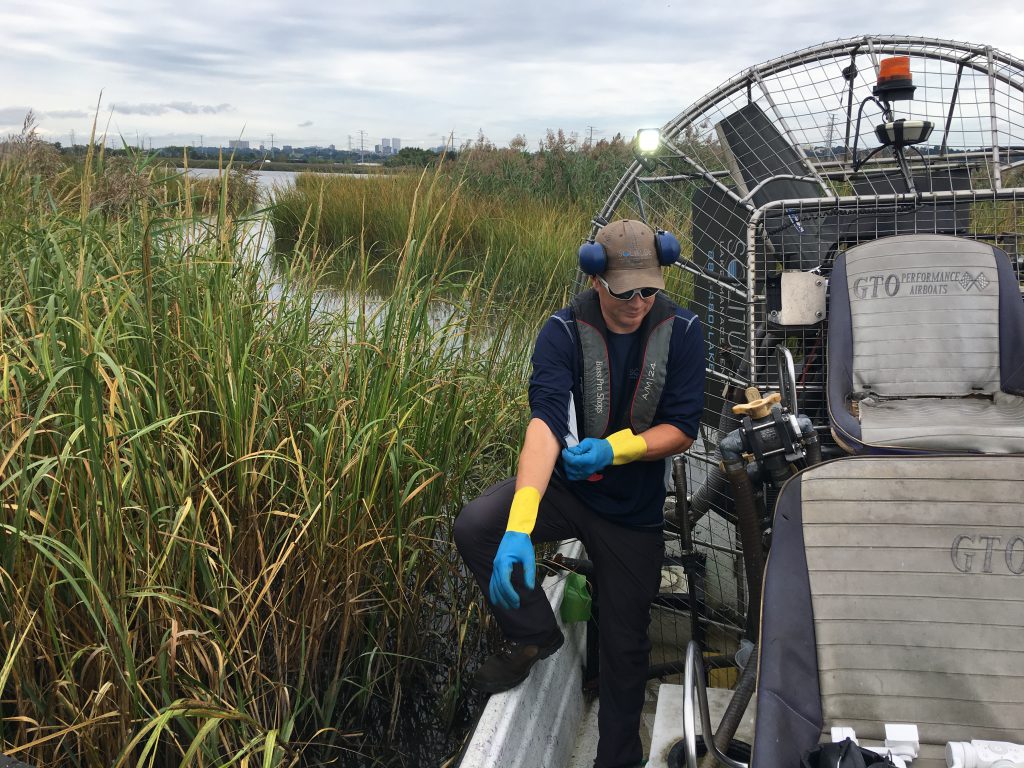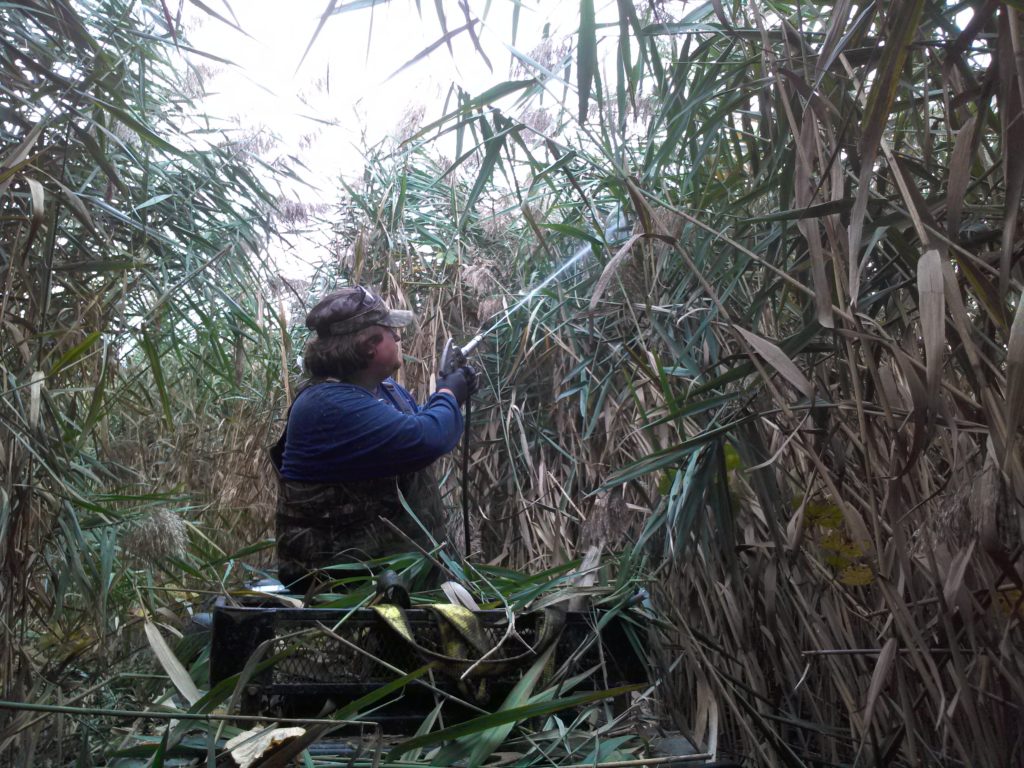

Very often we are asked to look at an issue that has been plaguing someone for years and they are finally ready to resolve the problem once and for all. Phragmites australis, commonly known as phragmites, is one particular species that people quickly become tired of seeing. The plant can block breathtaking views and can reduce the ability to fully enjoy your property. Phragmites is a highly invasive species that secretes an acid in to the soil to help the plant outcompete other species. There are particular invasive species control strategies that have shown excellent results and with diligent treatments, you can get the upper hand on this highly invasive plant.
Over the past 3 years, SOLitude performed this type of treatment on a military installation infested with hundreds of acres of phragmites. Treatments were performed in the fall utilizing both air and ground techniques. Fall is the optimum time to treat phragmites as the plants are sending nutrients to the roots, similar to animals fattening up before winter hibernation. During this time, the plants will transport the systemic herbicide to the roots allowing for better plant control. Both ground and aerial applications were utilized as some areas are wide open and accessible and others are fringed with trees.

One of the areas was an 80 acre open wetland area fed by a small stream that is fringed by trees and other woody vegetation and bordered by a small raised road. Upon initial investigation, the site was found completely ‘choked out’ with phragmites and little beneficial vegetation and wildlife was observed. During the first treatment season, this area was treated by both aerial and ground treatment with systemic herbicide. After inspection in the spring, a significant reduction in the number of phragmites plants present was observed. We also noticed a significant increase in the amount of waterfowl present and observed multiple terns and even a few egrets.
The same area was treated by both aerial and ground treatments in the fall the following year and further improvements were observed the next spring. The client observed multiple animal burrows in the area, increased turtle activity, and new frog species that had never been seen on the site. They also noted that the multi-year treatments greatly limited regrowth of the Phragmites and new native grass species had begun to repopulate the area.
The same area was treated by both aerial and ground treatments in the fall the following year and further improvements were observed the next spring. The client observed multiple animal burrows in the area, increased turtle activity, and new frog species that had never been seen on the site. They also noted that the multi-year treatments greatly limited regrowth of the Phragmites and new native grass species had begun to repopulate the area.
Another area included 10 acres bordered by a road on one side, trees on two sides and a small stream that fed the wetland on the other side. This was also treated in consecutive years by both air and ground treatments. After two years of treatments, there were significant improvements, more bird activity, and more invertebrate species were present than previously observed. Most importantly, new grasses, sedges and other plants began to propagate where the phragmites had previously overtaken.
Multiple-season treatments on phragmites at this and many other sites have provided significant improvements. These sites show how quickly native plants and animals will begin utilizing a habitat once conditions become more favorable. Observation also shows that biodiversity increases with the removal of invasive species. Establishing and maintaining a well-devised management plan for controlling invasive species is integral for the control of these nuisance plants. It will substantially aid in preserving the habitat for animals and enhance the natural beauty of the landscape that our clients are seeking.









